Segmentation isn't my area, so I'm not sure what the best approach is. Here are a couple heuristic ideas I came up with:
- Discard regions that are too big or too small.
It looks like you can expect a certain size from the vertebra.
regionIdxs = unique(L(:));
regionSizes = accumarray(L(:)+1,1);
If we look at regionSizes, we see the region sizes in pixels:
213360
919
887
810
601
695
14551
684
1515
414
749
128
173
26658
The regions you want (rows 2-6) are on the range 500-1000. We can probably safely discard regions that are <200 or >2000 in size.
goodRegionIdx = (regionSizes>200) & (regionSizes<2000);
regionIdxs = regionIdxs(goodRegionIdx);
regionSizes = regionSizes(goodRegionIdx);
- Look at the image moments of the desired regions.
The eigenvalues of the covariance matrix of a distribution characterize its size in its widest direction and its size perpendicular to that direction. We are looking for fat disk-shapes, so we can expect a big eigenvalue and a medium-sized eigenvalue.
[X,Y] = meshgrid(1:size(L,2),1:size(L,1));
for i = 1:length(regionIdxs)
idx = regionIdxs(i);
region = L==idx;
totalmass = sum(region(:));
Ex(i) = sum( X(1,:).*sum(region,1) ) / totalmass;
Ey(i) = sum( Y(:,1).*sum(region,2)) / totalmass;
Exy(i) = sum(sum( X.*Y.*region )) / totalmass;
Exx(i) = sum(sum( X.*X.*region )) / totalmass;
Eyy(i) = sum(sum( Y.*Y.*region )) / totalmass;
Varx(i) = Exx(i) - Ex(i)^2;
Vary(i) = Eyy(i) - Ey(i)^2;
Varxy(i) = Exy(i) - Ex(i)*Ey(i);
Cov = [Varx(i) Varxy(i); Varxy(i) Vary(i)];
eig(i,:) = eigs(Cov);
end
If we look at the eigenvalues eig:
177.6943 30.8029
142.4484 35.9089
164.6374 26.2081
112.6501 22.7570
138.1674 24.1569
89.8082 58.8964
284.2280 96.9304
83.3226 15.9994
113.3122 33.7410
We are only interested in rows 1-5, which have eigenvalues on the range 100-200 for the largest and below 50 the the second. If we discard these, get the following regions:
goodRegionIdx = (eig(:,1)>100) & (eig(:,1)<200) & (eig(:,2)<50);
regionIdxs = regionIdxs(goodRegionIdx);
We can plot the regions by using logical OR |.
finalImage = false(size(L));
for i = 1:length(regionIdxs)
finalImage = finalImage | (L==regionIdxs(i) );
end

We seem to get one false positive. Looking at the ratio of the eigenvalues eig(:,1)./eig(:,2) is one idea but that seem to be a little problematic too.
You could try some sort of outlier detection like RANSAC to try and eliminate the region you don't want, since true vertebra tend to be spatially aligned along a line or curve.
I'm not sure what else to suggest. You may have to look into more advanced segmentation methods like machine learning if you can't find another way to discriminate the good from the bad. Having a stricter preprocessing method might be one thing to try.
Hope that helps.


